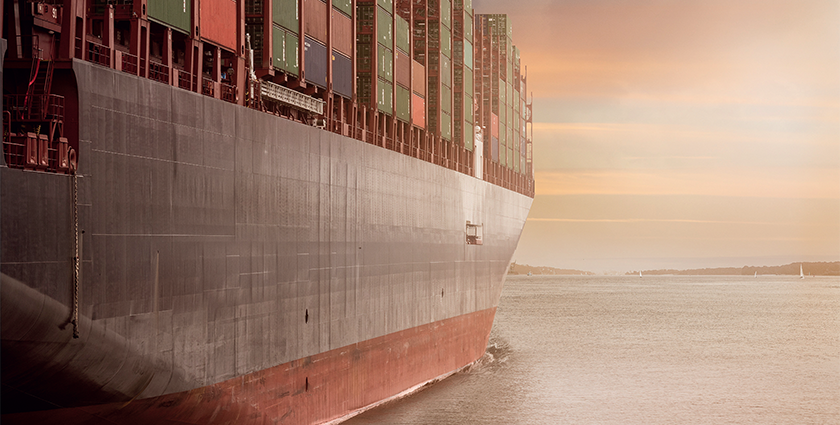
Tackling the Invisible Enemy: Strategies for Reducing Scope 3 Emissions in Supply Chains
Sustainability is fast becoming a key driver behind business decisions. Yet, organizations in Europe still produce 26 percent of the continent’s greenhouse gas emissions, and only nine percent are on track to meet net zero goals.
Acting now by setting stringent emissions targets will have a significant impact on brand image, investment opportunities and your bottom line. For instance, half of investors are willing to step away from companies that are not taking sufficient action on environmental issues, and one in three consumers have stopped purchasing from certain brands altogether due to sustainability and ethical related concerns.
When building a sustainability strategy, the primary focus is often to reduce emissions linked to in-house, day-to-day operations (Scope 1) and energy generation (Scope 2). However, around 90 percent of corporate emissions fall into another category – Scope 3. This is where we find all emissions that businesses are indirectly responsible for throughout the value chain, with supply chain accounting for around 60 percent of total Scope 3 emissions.
Focus is often placed on Scope 1 and 2 emissions which are traditionally easier to monitor, track and reduce. Yet, failing to consider Scope 3 emissions and the environmental impact of their supply chain operations means businesses are neglecting to take action where it will truly count.
So, where should businesses focus their efforts and how can supply chain leaders take action against the invisible enemy of emissions?
Harmonizing industry data for accurate visibility
Tracking emissions will soon become a necessity for supply chain leaders across Europe, with incoming laws seeking to hold businesses accountable throughout their value chain. To meet these legal requirements, businesses will need total visibility of their operations to provide an accurate view of their entire value chain.
This level of visibility requires collaboration between carriers and shippers to consolidate cross-industry data and produce an accurate picture of Scope 3 emissions across the board. If one chain in the link fails to do so, it will make setting achievable targets incredibly difficult and hold the industry back from achieving net zero goals. Only with all industry data harmonized will we truly be able to monitor, track and combat this problem.
Visibility capabilities must also extend to providing accurate predictions of potential scenarios that could result in failing to meet emission targets. In ocean freight, for example, visibility technologies can map exactly where vessels are, then create digital twins of them to see what the vessel will do in a variety of scenarios. This layers on top of port congestion visibility data to predict what is likely to happen, while monitoring what actually happens in real time. The comparison between the two scenarios enables such technologies to make accurate predictions, and inform future decision-making on specific tactics to reduce Scope 3 emissions.
Data-driven decision-making
Equipped with visibility data and predictive capabilities, businesses can make effective changes to their supply chain, cutting costs while minimizing their impact on the planet. Many companies are already building a multi-modal approach into their corporate sustainability strategies, looking to lower-carbon modes such as rail and barge to help reduce Scope 3 emissions.
Where previously there have been gaps in visibility when shipments move between modes or across borders, businesses can now access end-to-end tracking data, regardless of how many times a shipment has changed hands. This enables businesses to select the combination of modes that suits their needs, opting for the most sustainable route to minimize emissions, while helping to avoid bottlenecks and reduce costs. This approach is called ‘least emissions routing’, giving businesses access to data that enabling smarter and more sustainable decisions.
Now that Scope 1 and 2 emissions are on a steady decline, it is time to focus on one of the biggest hurdles to net zero goals, Scope 3. Under increased pressure to be more sustainable, no single action by either a shipper or carrier will suffice to tackle the challenge at hand. Supply chain leaders must collaborate with one another, bringing together data to effectively monitor and reduce our collective carbon footprint. By working together to bring this invisible enemy to light, we can use supply chain visibility data to make smarter decisions, power least emissions routing and – most importantly – reduce Scope 3 emissions for good.
For a list of the sources used in this article, please contact the editor
Christian Piller is VP of Sustainability and Research at project44.
project44 is on a mission to make supply chains work. As the supply chain connective tissue, project44 operates the world’s most trusted end-to-end visibility platform that tracks more than one billion shipments annually for 900 of the leading brands, including top companies in manufacturing, automotive, retail, life sciences, food & beverage, and oil, chemical & gas. Using project44, shippers and carriers across the globe drive greater predictability, resiliency and sustainability.
The undisputed leader in the market, project44 was named the Leader in the Gartner Magic Quadrant, #1 in FreightWaves’ FreightTech 2021, and the Customer’s Choice in Gartner Peer Insights Voice of the Customer report. project44 is headquartered in Chicago with a diverse team spanning 14 global offices.
www.project44.com